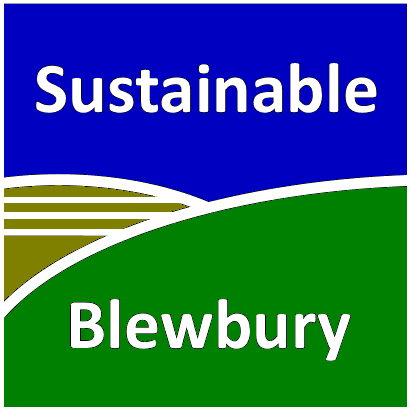
Updated 21 April 2018

|
Updated 21 April 2018 |
|
HOME PAGES GLOBAL WARMING WHAT YOU CAN DO GREEN ISSUES BACKGROUND THE INITIATIVE |
This page contains a diary of
our activities. 2018 January 2018 – Thermal imaging 2018: This year we imaged 12 houses. Two were quite new – in Chailey Gardens and Cossicle Mead – and one was a very extensive renovation of a bungalow including greatly improved insulation. It was good to see that none of these had any serious problems. Two houses had been surveyed previously, in order to verify that improvements were working, which they were. And two houses were very complex mixtures of very old, fairly old and new sections that were a challenge to analyse. 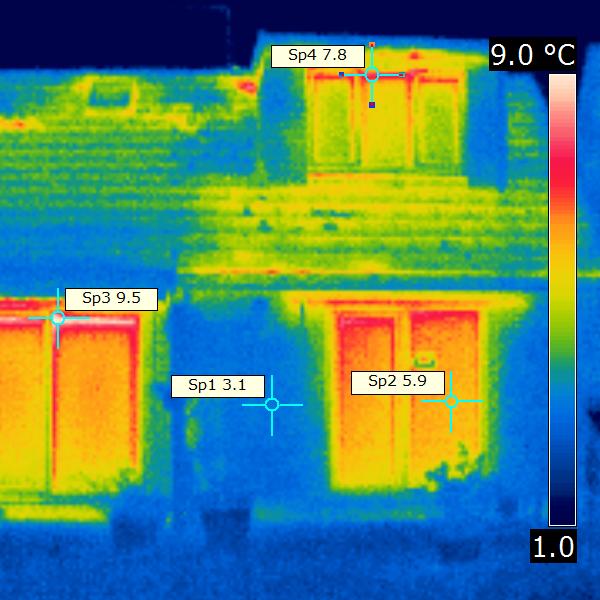
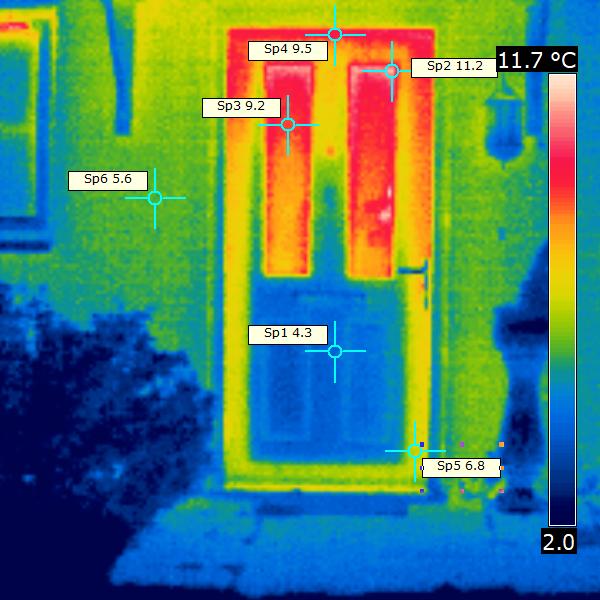
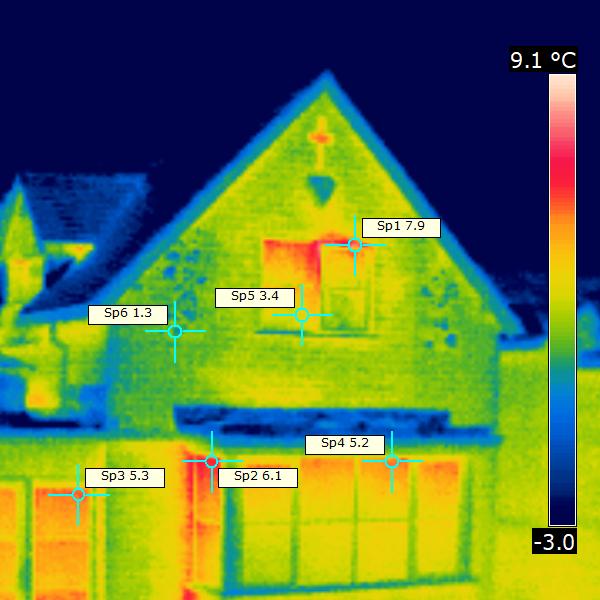
2017 January 2017 – Thermal imaging 2017: This year we imaged 21 houses, including some large and complex older buildings. About a third of these were re-surveys to evaluate the effectiveness of improved insulation, windows and doors. The first image shows an old timber-framed wall – to cover it all we had to combine seven images, with some distorted perspective. The second and third images show the effect of insulating the inside of a door and adding secondary glazing to a window. 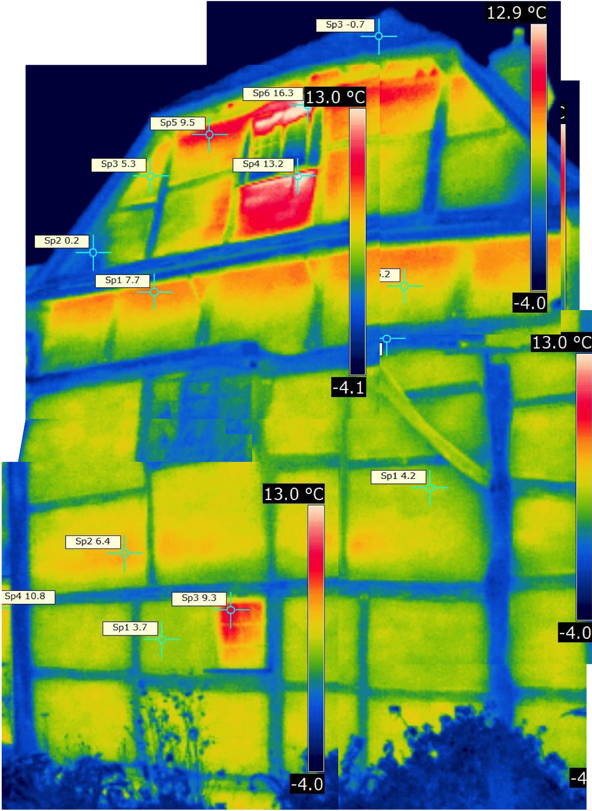
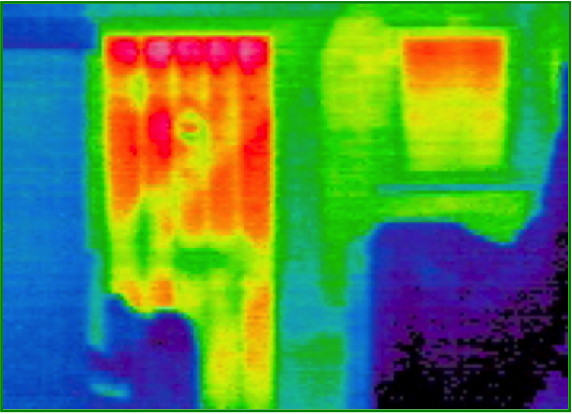 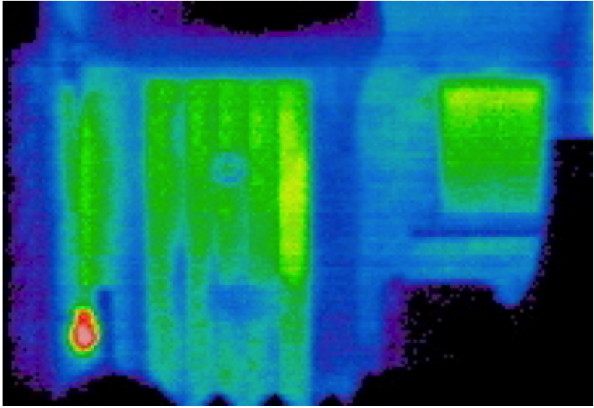
2016 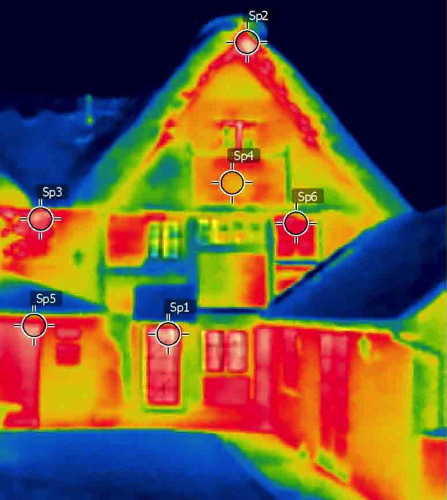
February 2016 – Thermal imaging 2016: We once again borrowed a camera from the district council to do thermal imaging surveys of people’s houses. This year we imaged 20 houses, writing short reports that can help to pinpoint any places where the house is leaking heat badly. The houses varied greatly in age, style and size; some surveys were for people who had just moved in, others to evaluate improvements in insulation. 2015 BEI-authored articles in the Sustainable Blewbury Newsletter April 2015:Members of the Energy Initiative contributed articles to Sustainable Blewbury newsletter (issue 13) on the Green Deal, the Blewbury Primary School’s Eco-School programme, and the Oxfordshire Low Carbon Hub shortlisted for an Ashden Award. December 2015:In this edition of the Sustainable Blewbury newsletter (issue 14), members of the Energy Initiative contributed articles on the Paris Climate Change Conference, various short items on climate change, government cuts to UK renewable energy support, the history of Sustainable Blewbury and Blewbury's water, the Volkswagen diesel pollution scandal and ash tree dieback. February 2015 – Thermal imaging 2015: For 2015 (the seventh consecutive year) we imaged houses to evaluate improvements that had been made to insulation, did initial surveys for new owners, and some large older houses. The combined image below, when compared to images taken in the past, illustrated various improvements that have been made over several years to wall and window insulation. We also imaged Blewbury Primary School and found a very complex situation. 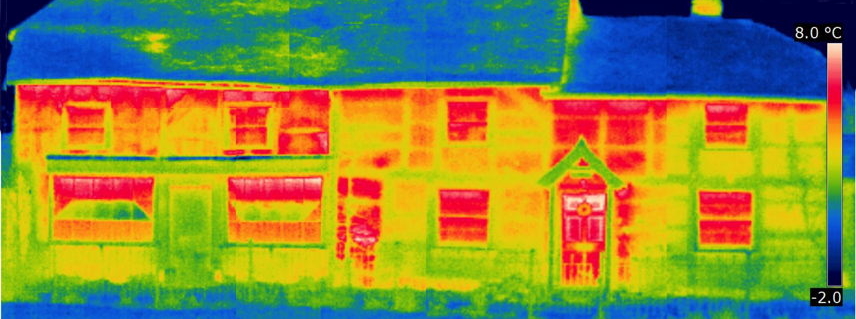
2014 February 2014 – Thermal imaging 2014: For 2014 we limited our imaging to:
We imaged 24 houses in all; due to a warm and exceedingly wet winter we had problems completing even this programme in sufficiently cold and and dry conditions. 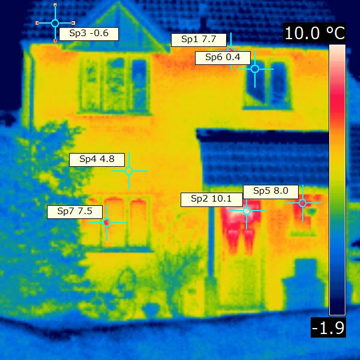 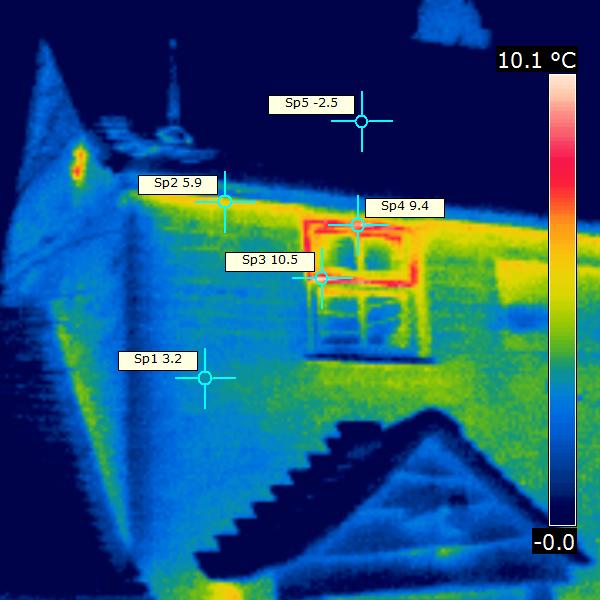 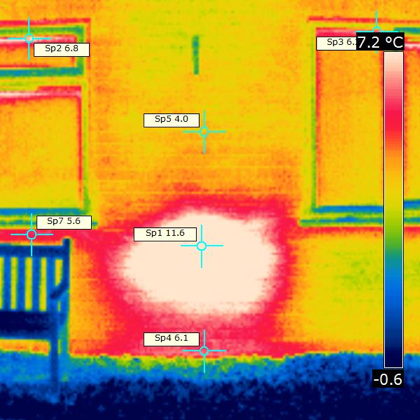 May 2014 – Sustainable Blewbury Green May Fair A poster-style summary of the IPCC 5th report on climate change, prepared for the Blewbury Green May Fair on 10 May 2014, is available here (pdf). BEI-authored articles in the Sustainable Blewbury Newsletter February 2014:Members of the Energy Initiative contributed articles to a special edition of the Sustainable Blewbury newsletter (issue 10), focused on energy and climate change issues. The articles included an updated view of peak oil; nuclear power pros, cons and UK status; and community energy possibilities for Blewbury. July 2014:In this edition of the Sustainable Blewbury newsletter (issue 11), members of the Energy Initiative contributed articles on the Renewable Heat Incentive and the Green Deal. November 2014:In this edition of the Sustainable Blewbury newsletter (issue 12), members of the Energy Initiative contributed an article on investing in community energy in Oxfordshire. 2013 January 2013 – Thermal imaging 2013: The 2013 imaging programme was our most ambitious ever. Again using the Vale’s camera, we imaged 53 houses and sent out what were probably our most detailed reports. In some cases the owners could compare the images with previous years to assess how much good was or was not done by various measures they had installed. An example is shown below, in which secondary double glazing and insulation behind radiators mounted on solid outside walls has clearly made substantial improvements. 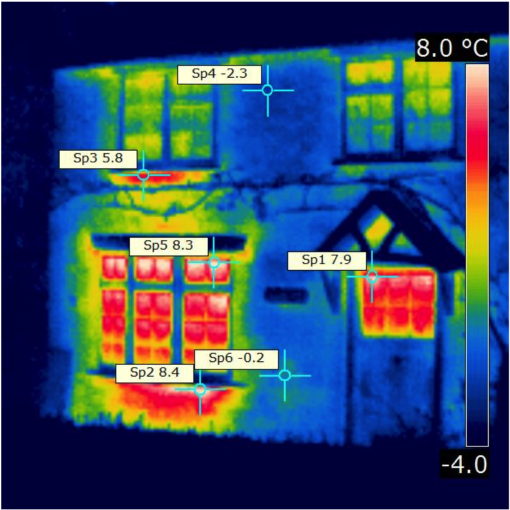
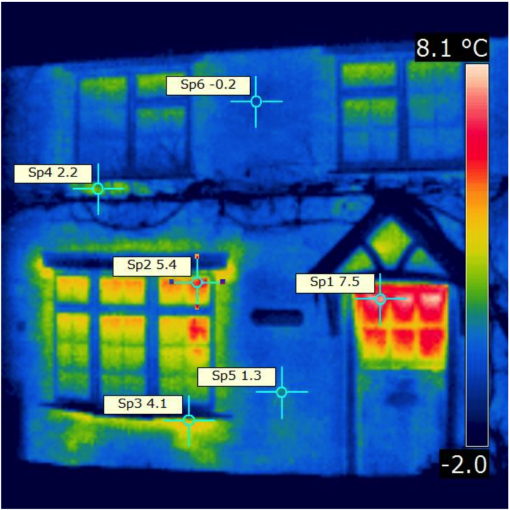
2012 January 2012 – Thermal imaging 2012: As in the past three years, the Blewbury Energy Initiative carried out a programme of thermal imaging. This time we borrowed the camera that was bought last year by the Vale of White Horse District Council on our advice. A record number of 37 houses and the new Recreation Ground Clubhouse were surveyed, some to assess what improvements to their insulation were needed and others to check the effect of work already done. Sample images are below. 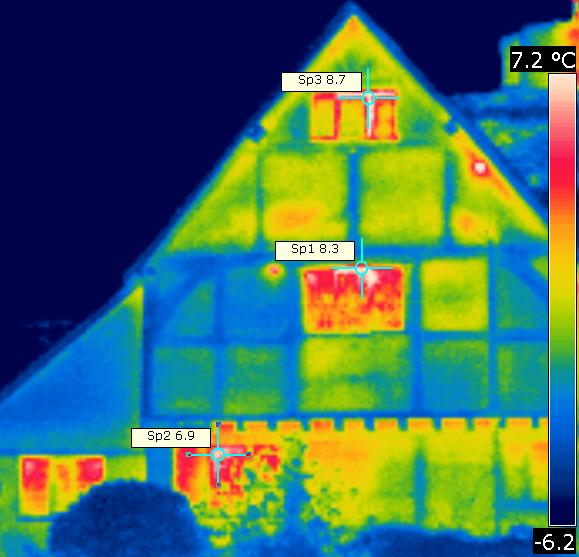
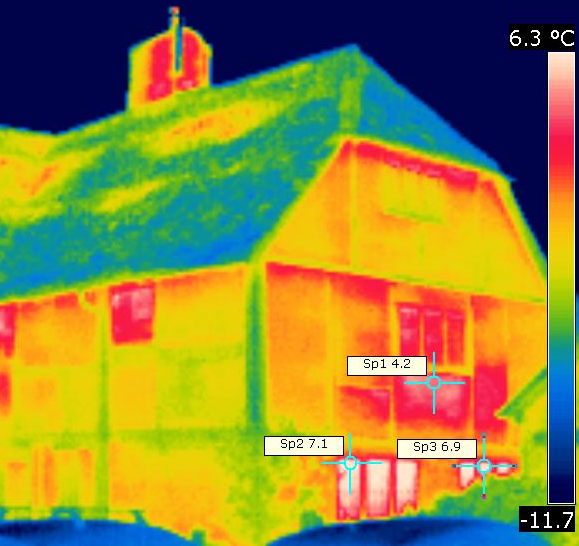
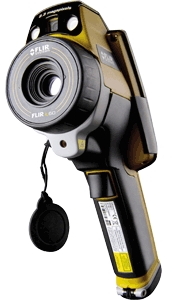
2011 January 2011 – Still more thermal imagery: During a cold weekend thermal images were taken of about a dozen houses, again using a borrowed camera. Of special interest is that some of these were follow-ups to check the effect of improvements, such as secondary double glazing and better insulation, to rectify problems that were revealed by earlier thermal images. (In the image below, the left-hand part of the pub is closed.) 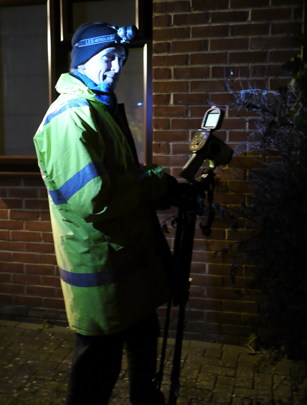
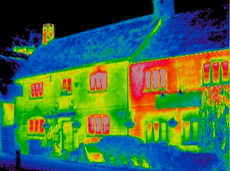 February 2011 – Advising on a themal imaging camera: We were asked by the Vale of White Horse District Council to advise them on a possible purchase of a thermal imaging camera. We tested some demonstration models, and together with our experience of the models we had already used we recommended a suitable model. This has now been purchased by the Council for use by local groups. June 2011 – Exhibition at Blewbury Festival: For the Festival's Exhibitions Weekend we participated in an exhibition by Sustainable Blewbury in Anita Rendel's lovely garden (photo below). The emphasis was on insulation methods, especially for old houses, and thermal imaging to check the performance of any measures taken or needed.  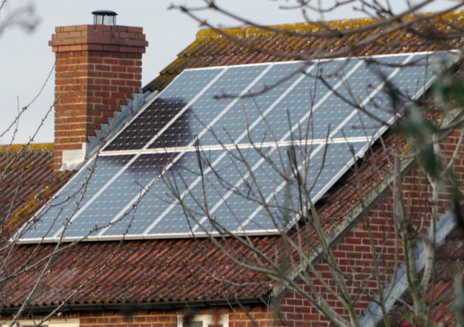
2010 January 2010 – More thermal imagery: During the very cold weather in December and January more photographs of houses were taken using a borrowed thermal imaging camera. July 2010 – Solar photovoltaic initiative: Following the introduction of the Feed-in Tariff for locally generated green energy, an initiative was run to encourage residents of Blewbury and Upton to install solar PV panels. Quotes, with reduced prices if enough orders were placed, were obtained from some local installers and a presentation was given in the Methodist Chapel, after more than 36 people were given handouts. The result was that by mid-November about a dozen new solar PV systems were installed, more than doubling the number in the two villages. (Photo shows one of the new systems.) August 2010 – Transport issues added to the website: After significant research a group of pages was added to the website covering the implications for greenhouse gas emissions of various choices of transport. 2009 April 2009 – Home energy survey report: We conducted a survey of those households who took part in the Home Energy Survey in 2006 and also of a selection of those who did not. The aim was to find out how much effect the Energy Initiative has had so far, and also to guide decisions on future activities that might be useful to villagers. The results are reported in full on another page. Nearly everyone has taken some action to reduce costs. The main influences leading to these actions seem to be general awareness of the need to reduce energy consumption, the pressure of energy costs, and the move to low-energy lighting. The energy initiative had also had some effect, and there was encouragement for our activities to continue. A number of specific suggestions were made. June 2009 – Exhibition at the Manor: We participated in an exhibition at Blewbury Manor as part of the launch of Sustainable Blewbury, of which the Energy Initiative is one section. The exhibition had displays of our work, and also gave tours of the energy-saving and energy-generating facilities that have been installed at the Manor. These include a large ground-source heat pump array, solar water-heating panels and photovoltaic energy generation. 2008 March 2008 – Research on electricity consumption: We researched the standby consumption of different devices. The surprises were:
July 2008 – Conversion and update of the website: A major revision of the website was undertaken, beginning with a conversion to a more modern style in line with the newly revised Blewbury website, and followed by bringing the contents up to date and including many more images. This was followed by the addition of some new material on a variety of subjects. 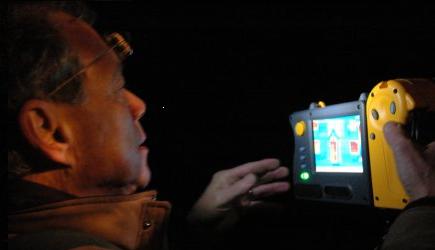
September 2008 – Appointment of energy representatives: Energy representatives were set up to provide advice and to support BEI initiatives across Blewbury. Each member of the committee was assigned a specific area of the village. [This ended in 2011.] December 2008 – More thermal imagery of Blewbury houses: We had use of a thermal imaging camera for a week during December, and took thermal images of a number of houses whose owners had asked for them. There were two nights when the outside temperature was cold enough for excellent images. We were using a Fluke Ti35 camera. The main problem was that the lens did not cover a wide angle, so that several images were required to cover each side of a house. (Photo shows an image being taken.) 2007 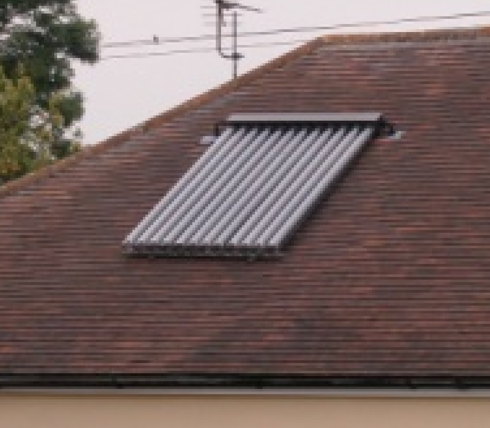
January 2007 – Alternative energy for the home: An evening meeting on this topic was held in the Methodist Chapel. The options were presented and discussed. Some specialists and a regional installer of alternative technologies were available for the discussion. (Photo shows evacuated-tube solar thermal panels in Blewbury.) April 2007 – ‘An Inconvenient Truth’: There was a free showing of this Oscar-winning film on climate change in the Methodist Chapel, followed by a discussion on the issue and how we can all 'do our bit' here in Blewbury and beyond. About 50 people attended. This was an initiative of the Blewbury Village Society Environment Group. June 2007 – Exhibits at the Blewbury Festival: There was an Energy Initiative stall at the family-day fair at the Festival. During the Exhibition weekend a working solar PV installation in a garden was on display. July 2007 – Survey of business premises: We contracted a professional company to survey the premises of those businesses in Blewbury who agreed to this, in order to investigate their energy consumption, and to make recommendations for saving energy and costs. This was subsidised by use of our Oxfordshire Sustainability and Conservation Award. The results of the survey were delivered in November, 2007. November 2007 – Review of electricity monitors: Dr. Sarah Darby, of the Environmental Change Institute at Oxford University, visited to get feedback from the users of the Electrisave monitor in Blewbury. This was part of her research into consumer displays of energy information. We also used the interviews to get feedback on the work of the Initiative, and what people thought we should be doing in future. 2006 January 2006 – Sample questionnaires analysed and revised ones distributed: The results from the sample questionnaires were analysed by a program and returned to those who filled them in, with an explanatory note. The results, though helpful, were only indicative because the lifestyle of each household was not recorded. An improved questionnaire, derived from experience with the sample, was circulated to every house in Blewbury with the Blewbury Bulletin. Those who returned the questionnaire received an energy survey report and two low-energy light bulbs. The website included advice on how to find the answers to some of the questions. This advice is now archived on a separate page. 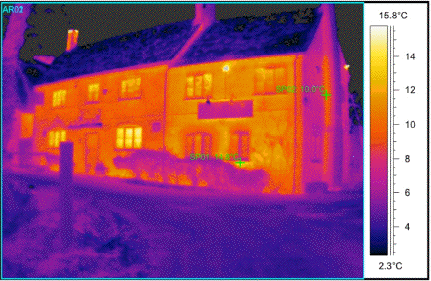
February 2006 – Thermal image survey of selected buildings: On a cold night, a team from Thermascan took infrared photographs of about 30 buildings in Blewbury. The results need to be interpreted with care, taking account of the effects of electric light. Some buildings have hot spots that are probably caused by specific building issues. In many buildings there is a warm area under the eaves, where the gap to allow air into the roof space also allows warmer air to escape. Integral garages can lose significant heat through and over the garage doors if the garage area is not well insulated from the rest of the house. Outside drainage pipes can carry heat from the bathroom. Internal radiators against a solid outside wall heat the garden if not insulated. Drawing curtains has a very obvious effect. (Photo shows the Red Lion pub.) March 2006 – Energy survey reports delivered: Energy survey reports were delivered to nearly all who had returned questionnaires. (A few were delayed as the analysis software did not produce a sensible report on the first pass.) The reports gave an indication of measures that may improve home comfort whilst reducing fuel bills and carbon emissions, and included information on no-cost or low-cost measures, as well as the District Council-backed discount insulation scheme. The key findings are: (1) Whilst many homes have some loft insulation, many would benefit from a top-up. (2) There is scope for a much larger uptake of low-energy light bulbs. (3) Blewbury has higher than average use of cavity-wall insulation, although a number of properties could still benefit from this. (4) Efficient hot-water tank lagging, and the use of hot-water tank thermostats, is much less than expected. Several of these improvements are cheap and easy to install, and would have fast paybacks. 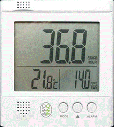
May 2006 – Energy footprint of Blewbury estimated: A spreadsheet of all Blewbury properties was produced, and the results of the analysed energy surveys were entered. From this, estimates of the average CO2 contribution from each type of property were made. The result was as follows: a carbon footprint of 5136 tonnes of CO2 per year, generated by 707 buildings, giving an average of 7.2 tonnes/year/building. June 2006 – Monitoring electricity usage: At the Blewbury Village Society Open Day, and in follow-up discussions with the home energy surveys, it became apparent that most householders have little idea of how much electricity they are consuming at any point in time, and many get a horrible shock when the bill arrives. The Energy Initiative identified an energy monitor then called the Electrisave (photo), evaluated it, and arranged for a bulk purchase for residents who wished to buy one. The device is now called the OWL Monitor. September 2006 – A report on our initial work was written, and aims for the next period defined: These were as follows: To find and publicise practical solutions to the domestic energy issues that arose from our surveys. To expand our investigations and education on renewable and alternative energy options suitable for the community. To seek to help community buildings and local businesses to improve their energy efficiency. October 2006 – Awards: The Oxfordshire Sustainability and Conservation Awards (OSCAs) recognise schools, community groups and businesses that have taken action for the environment. There are four categories: Biodiversity and Grounds Development, Energy Efficiency and Renewables, Waste Minimisation, and Water Efficiency. At the presentation on 19 October 2006 the Blewbury Energy Initiative was presented with the gold award for the category "Energy Efficiency and Renewables". This came with a very welcome prize of £1000 which was used to further our work. There were also awards for "Environmental Community Champions", and the original webmaster of this website, John Richards, was chosen for the silver award. 2005 September 2005 – Sample questionnaires: We asked a small sample of people from different house types to fill in a questionnaire on the features of their houses which affect energy usage. The results would be analysed to provide a report for each household surveyed. This had two aims: to obtain an outline of household energy issues, and to help develop a survey to be offered to all households in Blewbury. December 2005 – Website launched: The energy website was launched as a subset of the Blewbury website. It is intended to provide information supporting the aims of the Blewbury Energy Initiative, and to provide a general introduction to energy issues. |
 |
If you have any comments or queries about this website please contact the
webmaster. |
© Blewbury Energy Initiative 2018 |